
Growing your own vegetables can be super fun and rewarding. You get to eat yummy food that you grew yourself. It’s like having a special treasure in your backyard.
But to make your garden grow, you need to know some secrets. You need to give your plants the right amount of sunlight and water.
By learning these secrets, you can have a thriving vegetable garden and enjoy your favorite fruits and veggies all year round.
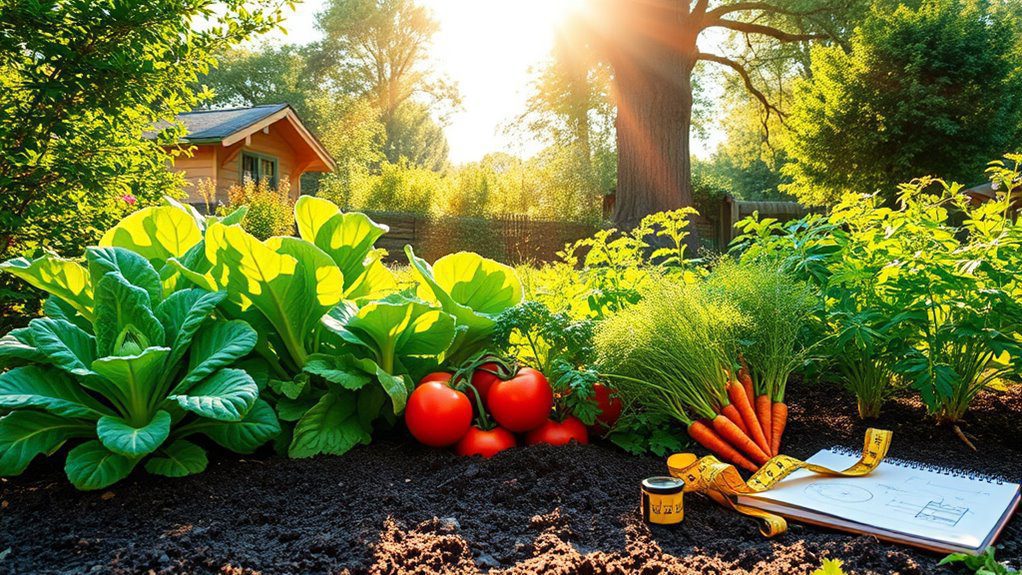
Evaluating your space and sunlight is essential for a successful backyard vegetable garden. Start by examining the available area—consider the size, shape, and soil quality. Observe how much sunlight your garden receives throughout the day; most vegetables thrive in at least 6-8 hours of direct sunlight. Take note of any obstacles like trees or buildings that may cast shadows. By understanding your space and sunlight conditions, you can select the right vegetables for best growth.
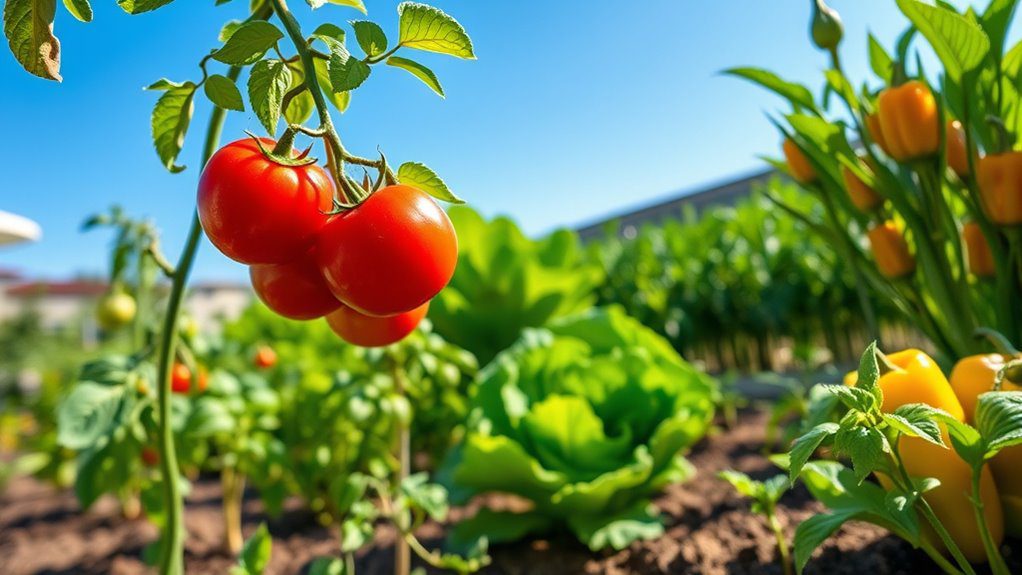
Selecting the right vegetables for your climate is essential for a successful backyard garden. Begin by evaluating your local growing conditions, such as temperature, rainfall, and sunlight. Research which vegetables thrive in your zone; for instance, tomatoes and peppers prefer warm climates, while leafy greens and root vegetables can tolerate cooler temperatures. Opt for varieties that are well-suited for your season and soil type, ensuring a bountiful harvest throughout the growing period.
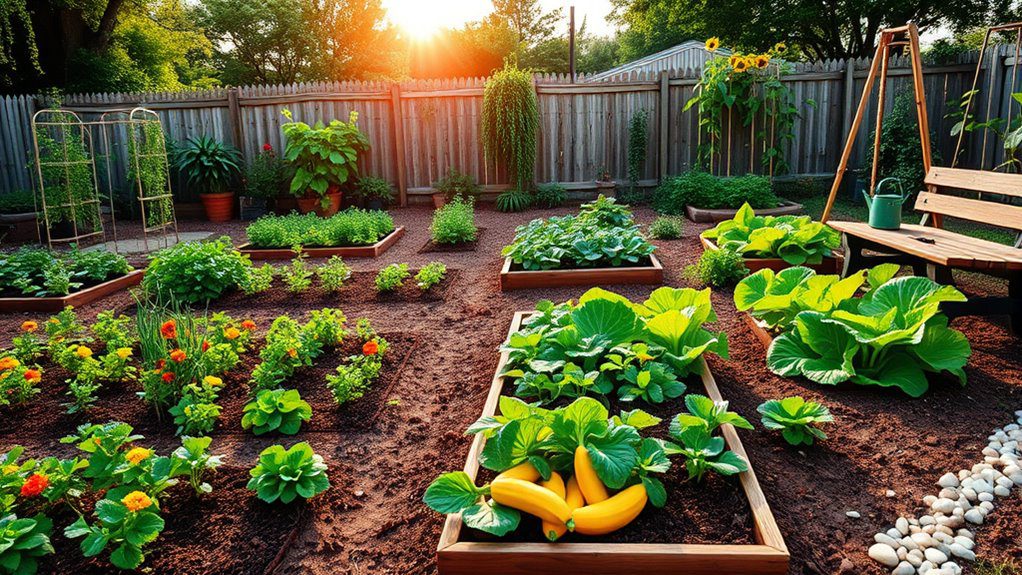
Planning your garden layout is essential for a successful backyard vegetable garden. Start by evaluating the available space, sunlight exposure, and soil quality. Consider the growth habits of your chosen plants—some may need more space or support. Creating a grid or using raised beds can maximize efficiency. Additionally, strategize plant placement to facilitate companion planting, which can improve growth and repel pests. A thoughtful layout will guarantee better yields and a more enjoyable gardening experience.
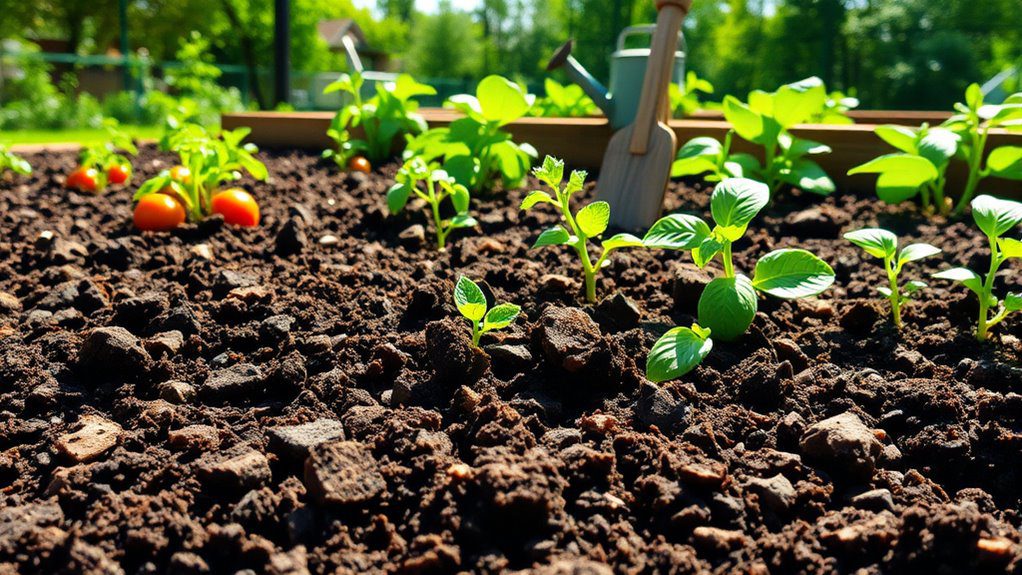
Starting your backyard vegetable garden with quality soil is essential for healthy plant growth. Rich, fertile soil provides the necessary nutrients, supports root development, and retains moisture, all of which contribute to a thriving garden. Test your soil for pH and nutrient levels, and consider adding organic matter like compost or well-rotted manure to enhance its structure and fertility. By investing time in preparing quality soil, you set a strong foundation for a productive and bountiful vegetable garden.
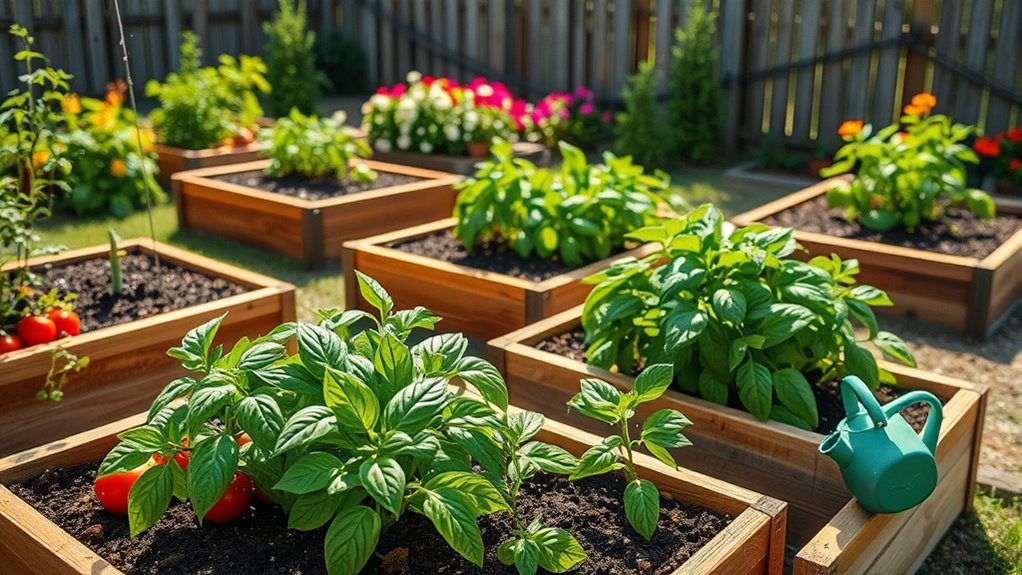
Using raised beds for your vegetable garden can greatly enhance drainage, which is essential for healthy plant growth. Elevated beds prevent water accumulation, allowing excess moisture to escape while retaining the right amount of soil moisture for your plants. This setup not only promotes healthy root development but also improves soil quality by letting you control the mix and amendments. Additionally, raised beds warm up faster in spring, extending your growing season and enabling earlier planting.
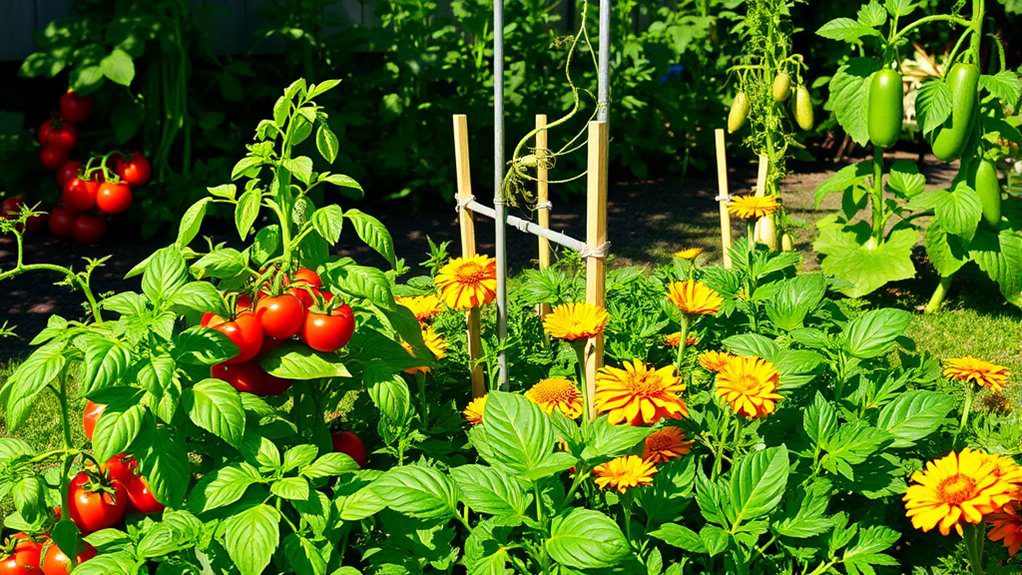
Companion planting involves strategically placing different plant species together to enhance growth, deter pests, and maximize yields in your backyard vegetable garden. For instance, planting basil near tomatoes can improve flavor and repel aphids. Additionally, marigolds can deter nematodes when planted with carrots. This method creates a harmonious garden ecosystem, promotes biodiversity, and reduces the need for chemical pesticides, leading to healthier plants and produce. Experiment with combinations to find what works best for your specific garden environment.
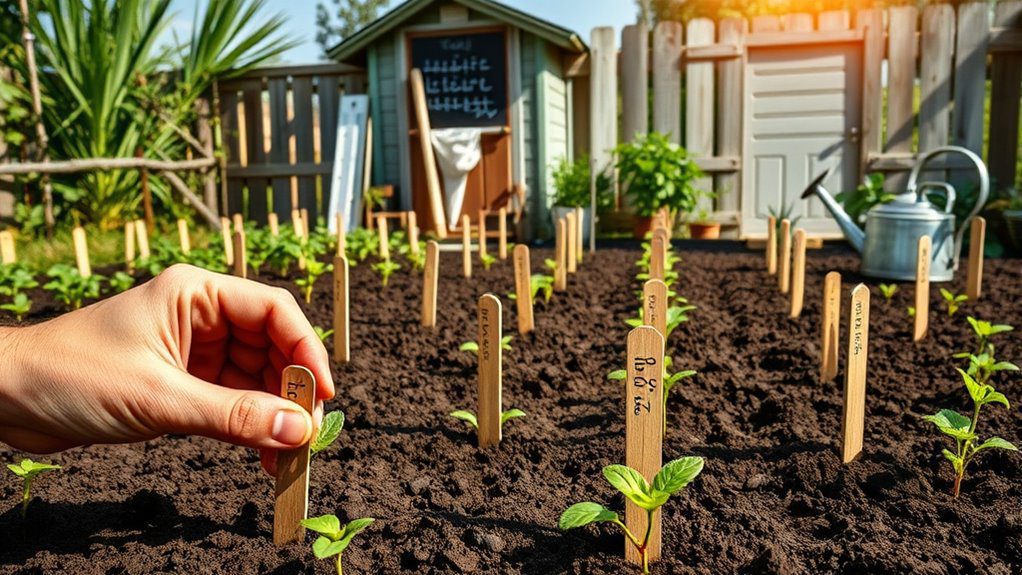
Timing your planting is essential for a successful vegetable garden. Different vegetables have specific growing seasons, so consult a planting calendar based on your local climate to determine the best times for sowing seeds and transplanting seedlings. Pay attention to frost dates; planting too early or late can hinder growth. Additionally, consider factors like soil temperature and moisture levels to guarantee ideal conditions for germination and plant development. Proper timing can lead to a bountiful harvest!
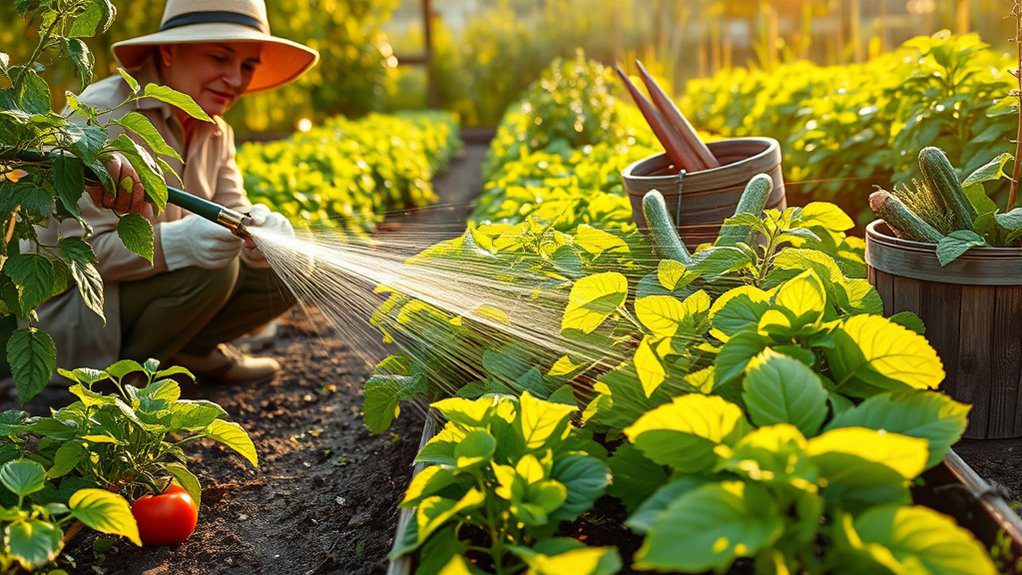
Watering your vegetable garden wisely is essential for ideal growth and crop yield. Early morning is the best time to water, allowing plants to absorb moisture before the heat of the day. Aim for deep, infrequent watering to encourage strong root systems, reducing the risk of pests and diseases. Use soaker hoses or drip irrigation for efficient water use, and always check soil moisture before watering to avoid over-saturation. This promotes healthier plants and conserves water resources.
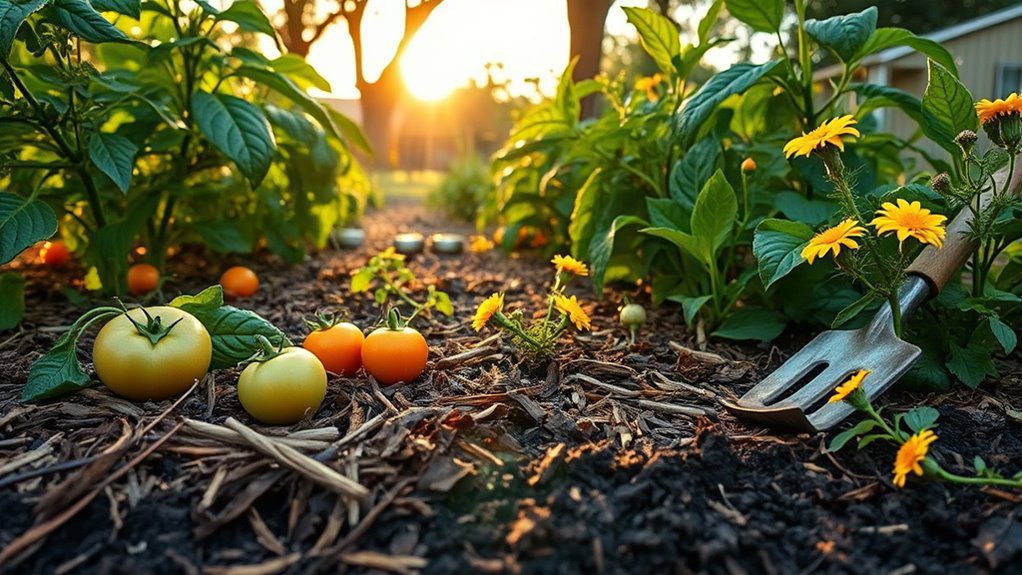
Using mulch in your backyard vegetable garden is an effective technique to retain soil moisture. By covering the soil with organic materials like straw, wood chips, or grass clippings, you create a barrier that reduces evaporation. This not only helps maintain moisture levels but also suppresses weeds and improves soil health as the mulch breaks down over time. Regularly replenishing your mulch layer will guarantee your vegetable plants stay hydrated and thrive throughout the growing season.
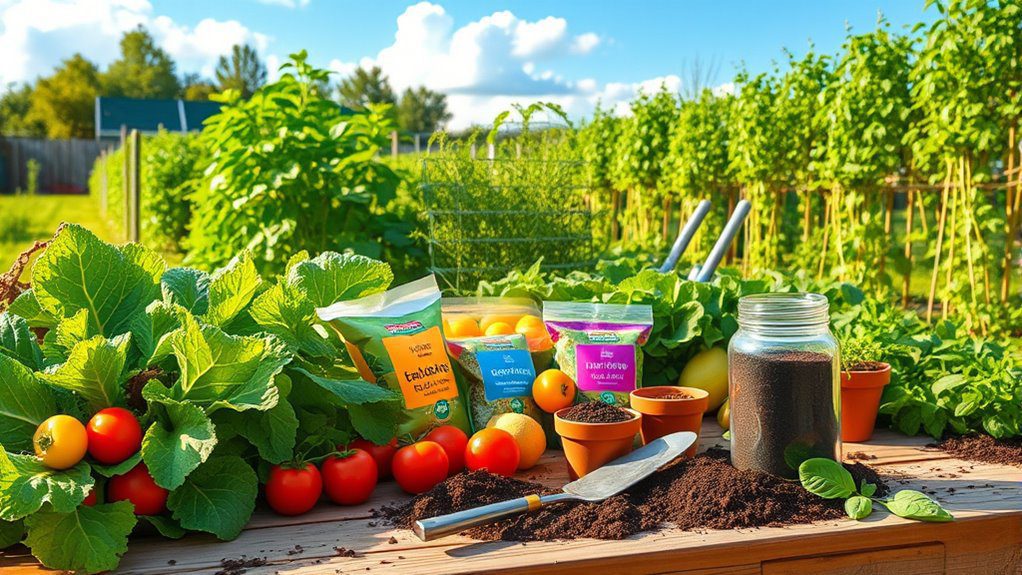
Fertilizing is essential for maintaining healthy growth in your backyard vegetable garden. Utilize a balanced fertilizer that provides the necessary macronutrients—nitrogen, phosphorus, and potassium—along with micronutrients for ideal plant health. Apply fertilizer according to the specific needs of your vegetables, and consider organic options like compost or fish emulsion for a more sustainable approach. Regularly testing your soil will also help determine the right type and amount of fertilizer to promote robust growth and bountiful harvests.
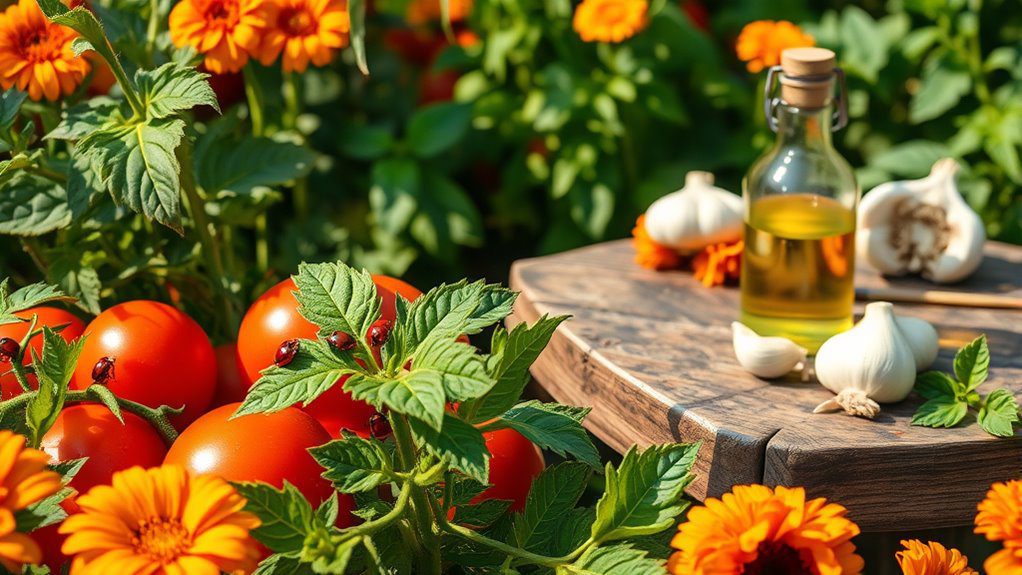
Controlling pests naturally in your backyard vegetable garden can help maintain a healthy ecosystem while protecting your crops. Consider introducing beneficial insects, such as ladybugs and lacewings, which prey on harmful pests. Companion planting is another effective strategy; certain plants, like marigolds, can repel unwanted insects. Additionally, homemade sprays using ingredients like garlic or neem oil can deter pests without harming the environment. Regular monitoring and encouraging biodiversity will also strengthen your garden’s resilience against infestations.
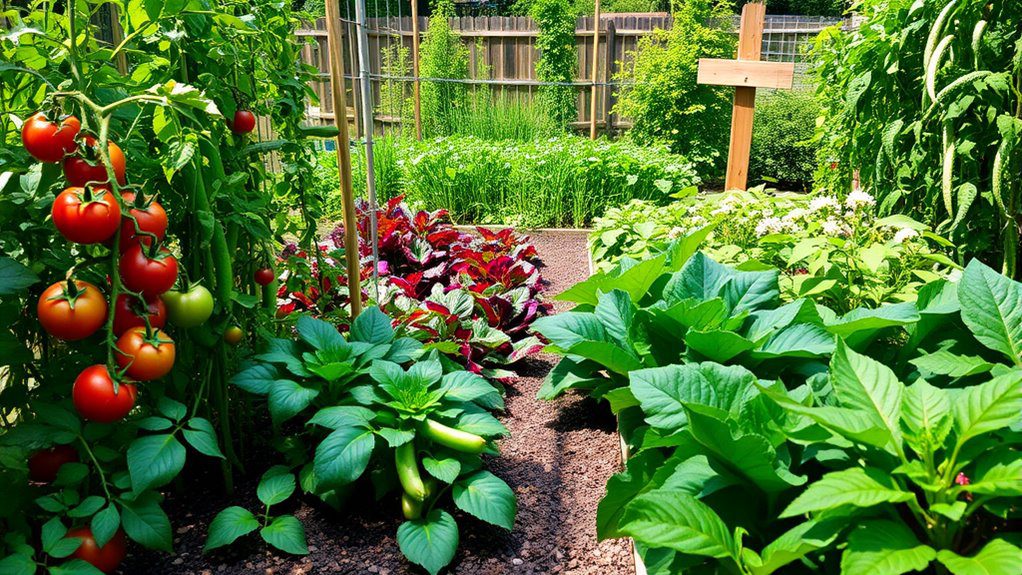
Rotating your crops yearly is an essential practice for maintaining a healthy backyard vegetable garden. This method prevents soil depletion and helps manage pests and diseases by disrupting their life cycles. Different crops absorb varying nutrients, so rotating them can enhance soil fertility. For example, following nitrogen-fixing legumes with heavy feeders like tomatoes can replenish essential nutrients. Aim to rotate your plants in a cycle every season to guarantee a thriving garden and bountiful harvests.
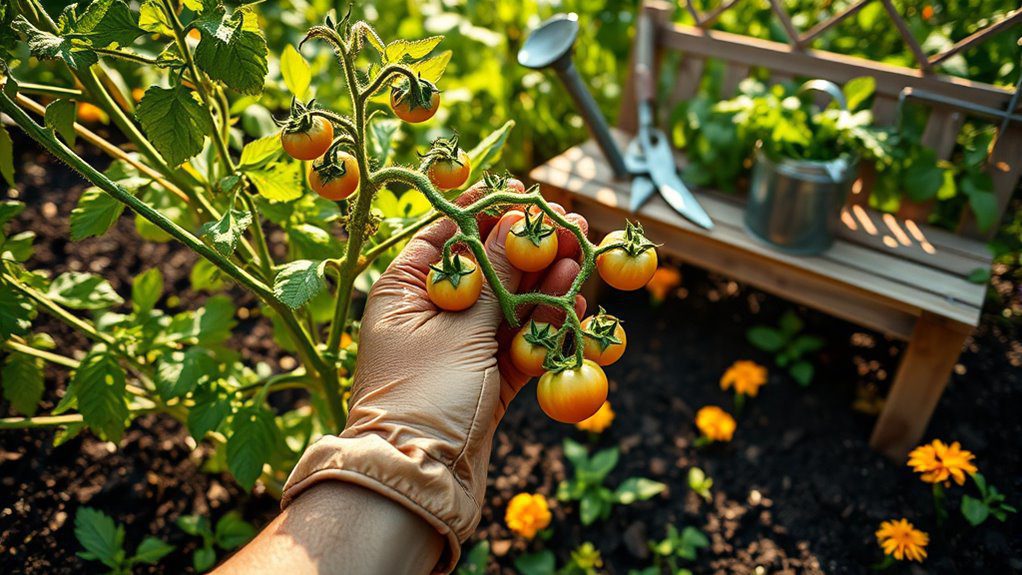
Pruning and maintaining your plants is essential for a thriving backyard vegetable garden. Regularly remove dead or yellowing leaves to promote air circulation and prevent disease. Trim back overgrown stems to encourage healthier growth and better fruit production. Guarantee your plants receive adequate water and nutrients, adjusting as needed based on seasonal changes. By staying attentive and proactive with maintenance, you can enjoy a bountiful harvest throughout the growing season.
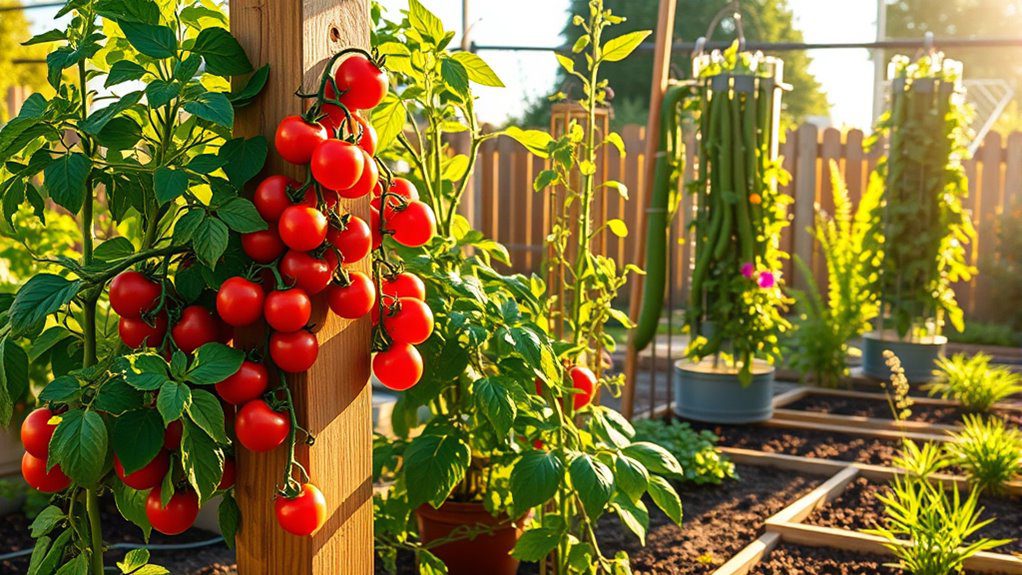
Implementing vertical gardening techniques in your backyard vegetable garden can maximize space and enhance plant health. Use trellises, plant poles, or vertical planters to support climbing plants like tomatoes, cucumbers, and beans. This not only saves ground space but also improves air circulation and sunlight exposure for the plants, reducing the risk of diseases. Additionally, creating a visually appealing garden structure adds aesthetic value while promoting efficient gardening practices.
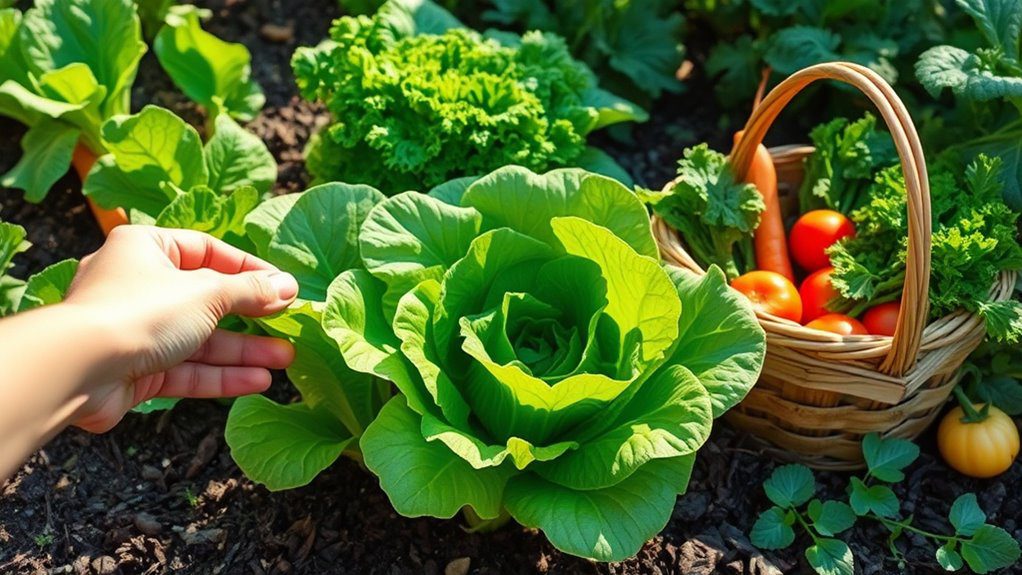
Harvesting your vegetables at the right time is essential for achieving the best flavor and quality. Each type of vegetable has its own ideal harvest window. For instance, leafy greens are best picked when they are young and tender, while root vegetables like carrots should be harvested when they reach their perfect size. Keep an eye on color, texture, and size, and regularly check your plants to make certain you’re reaping the rewards of your garden at their peak!
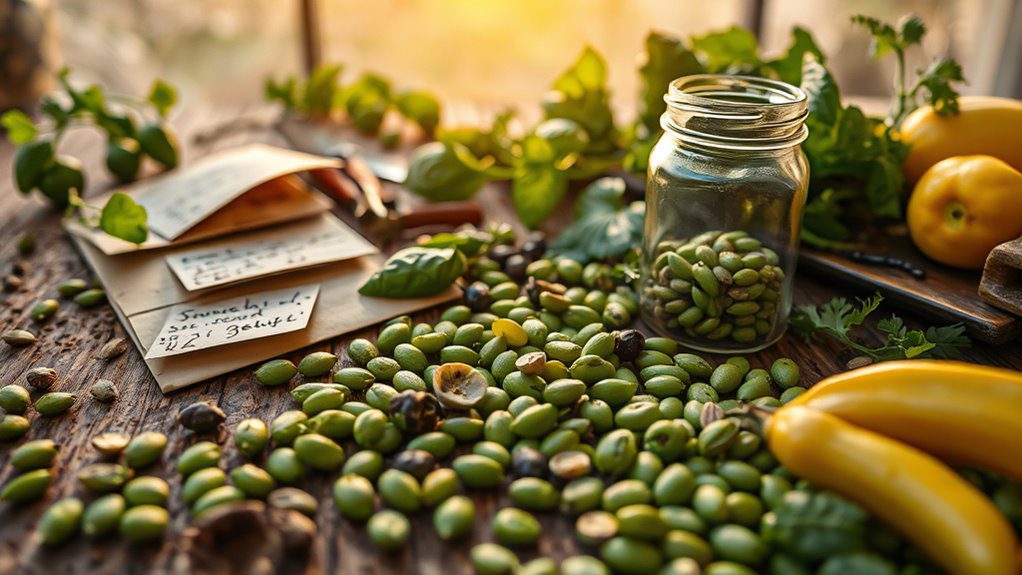
Saving seeds from your backyard vegetable garden is a rewarding and cost-effective practice. By allowing certain plants to mature fully, you can collect seeds for next season’s planting. Choose healthy, disease-free plants and harvest seeds when they are dry and fully formed. Store them in a cool, dark place in labeled envelopes or jars, ensuring they remain dry to maintain viability. This not only saves money but also encourages plant resilience and biodiversity in your garden.
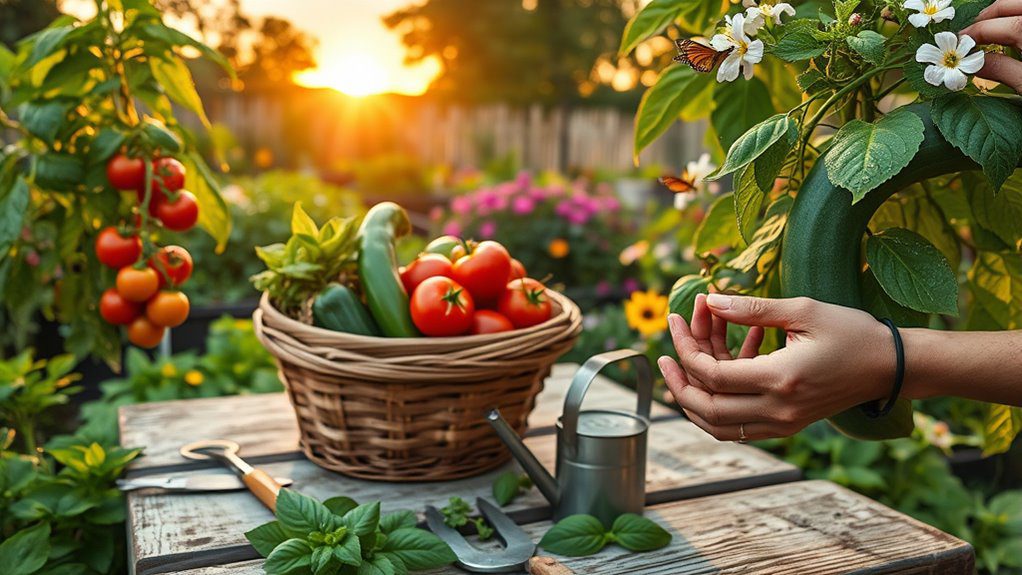
Gardening is not just about growing vegetables; it’s a journey of discovery and personal growth. As you cultivate your backyard vegetable garden, embrace the joy of the process—experiment with different plants, learn about their needs, and observe how they thrive. Each challenge presents an opportunity for growth, whether it’s mastering pest control or understanding soil health. Cherish the time spent outdoors and the lessons nature teaches, transforming your garden into a source of both nourishment and knowledge.
In your journey to grow a flourishing backyard vegetable garden, remember that success often springs from a combination of factors—just like how various plants support each other’s growth. By evaluating your space, choosing the right veggies, and experimenting with your layout, you’ll uncover not just a bountiful harvest but also a deeper connection to nature. Embrace the coincidence of learning and growing together; each season offers new lessons, making your gardening experience as rewarding as the crops you cultivate.

Don't let aphids, slugs, and caterpillars ruin another plant. Take back control with simple, natural methods that actually work.